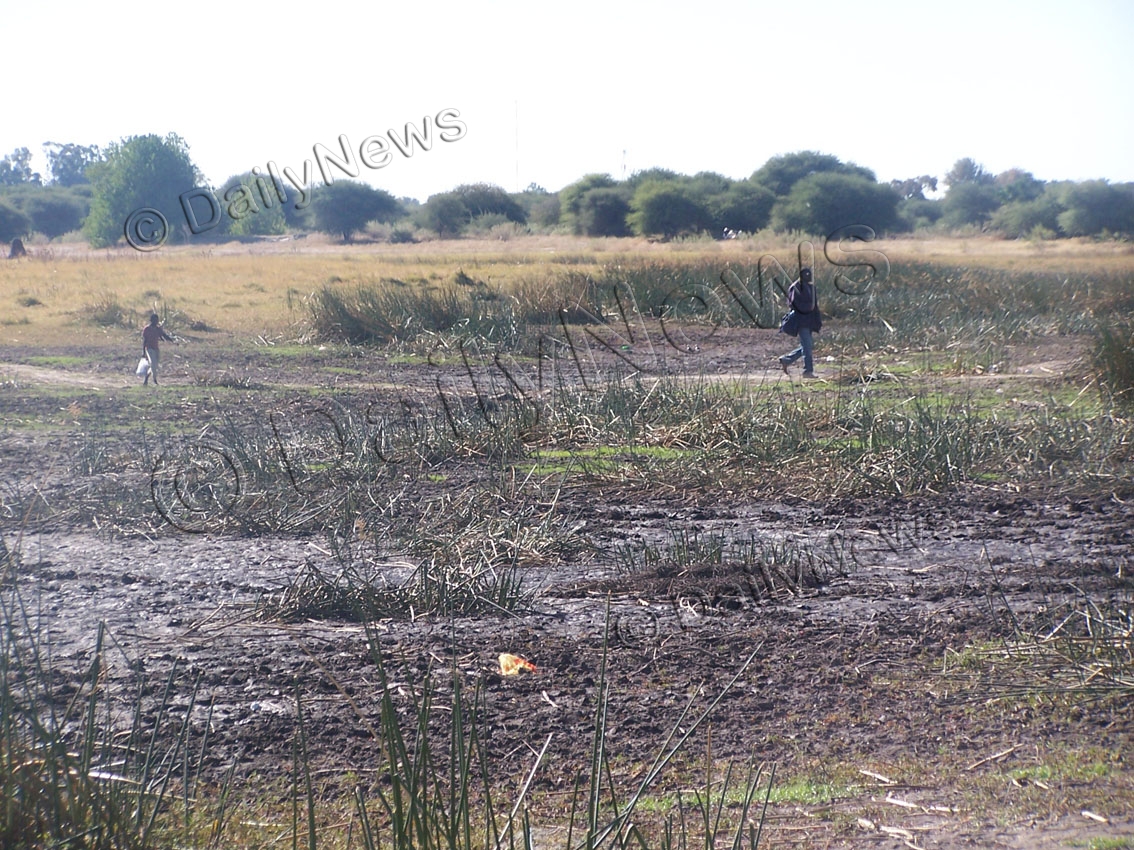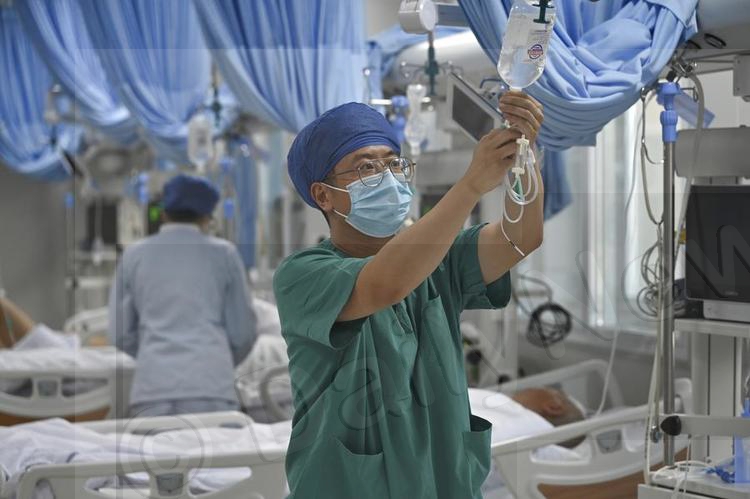Grief as Thamalakane River dries up
17 Jan 2016
Scarce rainfall and high temperatures a have resulted in Thamalakane River experiencing the lower than normal water levels. Some parts of the river are completely dry.
This state of affairs has affected businesses, which depend on the river to effectively execute their trade.
Recently, Maun based Botswana Meat Commission (BMC) abattoir clashed with farmers as they could not slaughter cattle as a result of shortage of water.
The abattoir source of water is Thamalakane River. The plant manager, Mr Oabona Ramontshwara was recently quoted saying their plant could not purify the muddy water from the river because of its declining water levels.
The Ministry of Agriculture spokesperson from the North West District office, Mr Clifford Molefe, said the drying of the river was affecting some of the agricultural projects in the region.
He said two commercial farmers in Nxaraga who produces grain are also feeling the impact as they use irrigation water from Thamalakane River. These farmers use a device called centre pivot and it requires a lot of water to operate effectively,.
One of the farmers, Mr Molefe said they are ploughing 70 hectares each and their already advanced plan to increase their cultivation to 300 hectares each could be affected. AHe said their Boro Agriculture Research project will need a lot of water to operate.
The project will entail an experiment in agricultural research as well as basic seed production which is going to use irrigation. Mr Molefe said their plan was to equip the two boreholes in the area to augment water from the already drying river.
Meanwhile, the dry spell did not spare hotels and lodges in the confluence of Thamalakane River. Sedia lodge manager in Maun, Mr Kenosi Daniel said their boat cruising and canoeing activities have been affected.
He said their clients enjoyed these activities and now they were likely to experience a decline in bookings.
Mr Daniel said the lodge was compelled to look for other alternatives.
For his part, Back Peckers Lodge in Maun, Mr Tsana Henry, said his lodge stopped boat cruising last year while canoeing was halted two weeks back as a result of shortage of water. He also said they were forced to drive for two hours to where they can continue these activities for their clients.
Nonetheless, a research scholar in hydrology at Okavango Research Institute (ORI), Mr Edwin Mosimanyana, admitted that water in the river is virtually stagnant, and exists in patches and very soon these will dry up. He explained that Thamalakane River conveys water out of the Okavango Delta, which in turn gets more than 80 per cent of its water from the Angolan Highlands.
“The amount of water that reaches the delta depends on the rainfall situation in the Angolan Highlands, which receive almost three times the amount of rainfall we receive in Maun annually,” he told BOPA in an interview.
Mr Mosimanyana said if the rains are good in Angola, more water reaches the delta, and vice-versa. He said it was estimated that 96 – 98 per cent of water that enters the delta was lost through evapotranspiration, with the rest flowing out through the Thamalakane River.
Since the largest flooding in 2010/11, Mr Mosimanyana said the peak flow at Mohembo has been reducing gradually every year. This, he said means less water entering the system.
He noted that this reflects poor rainfall in the Angolan Highlands over the same period. However, he said the evapotranspiration rate remains almost the same. This, according to Mr Mosimanyana means less water is entering the delta, yet most of it continues to be lost through evapotranspiration.
“This less water entering the system, versus high evapotranspiration rates is probably the main contributing factor to the drying up of the Thamalakane River,” he noted.
Mr Mosimanyana further stated that Thamalakane is fed by the Boro River, which joins it in the Matlapana area.
“Further upstream of where the Boro joins Thamalakane, Santantadibe and Mogapelwa also contribute water to the Thamalakane River, especially during extremely wet periods.”
As for the impact of the drying spell, Mr Mosimanyana said communities along these rivers use the water for various activities, including household use, watering their livestock, gardens and any other activities that need water.
It must be noted that some communities depend on the rivers as their primary source of water, he said. “These communities have lost a comparatively easily accessible source of water. They will have to look for alternative sources of water to meet their needs. Such sources may not be reliable, too far, more expensive, and not easily accessible,” observed Mr Mosimanyana.
He also said the business community would feel the pinch very soon. The river provided them with easily accessible water where they had to invest mainly in water pumps and storage tanks, he quipped.
However, he said once the river is bone-dry, they will have to look for alternative sources of water and would include boreholes, wells, or purchasing water from commercial water suppliers. “Obviously this will push up our operating costs,” he added.
For example, he said car washes, which primarily depend on water drawn directly from the river, are mushrooming all over the place.
Brick yards will also feel the impact, tourism sector has lost one of their business offerings, boat cruises and BMC also pumped a significant amount of water directly from the river, explained they hydrologist.
He however noted that Thamalakane River has dried completely in the past therefore “it is nature taking its course” but because of the benefits people derive directly from the river, this is a crisis.
Furthermore, Mr Mosimanyana said Chobe River is in the Zambezi River Basin, whose main source of water is also the Angolan Highlands and because of the poor rains, water levels in the Chobe River are also likely to drop to lower than normal levels. Ends
Source : BOPA
Author : Sefhako Sefhako
Location : Maun
Event : Interview
Date : 17 Jan 2016






